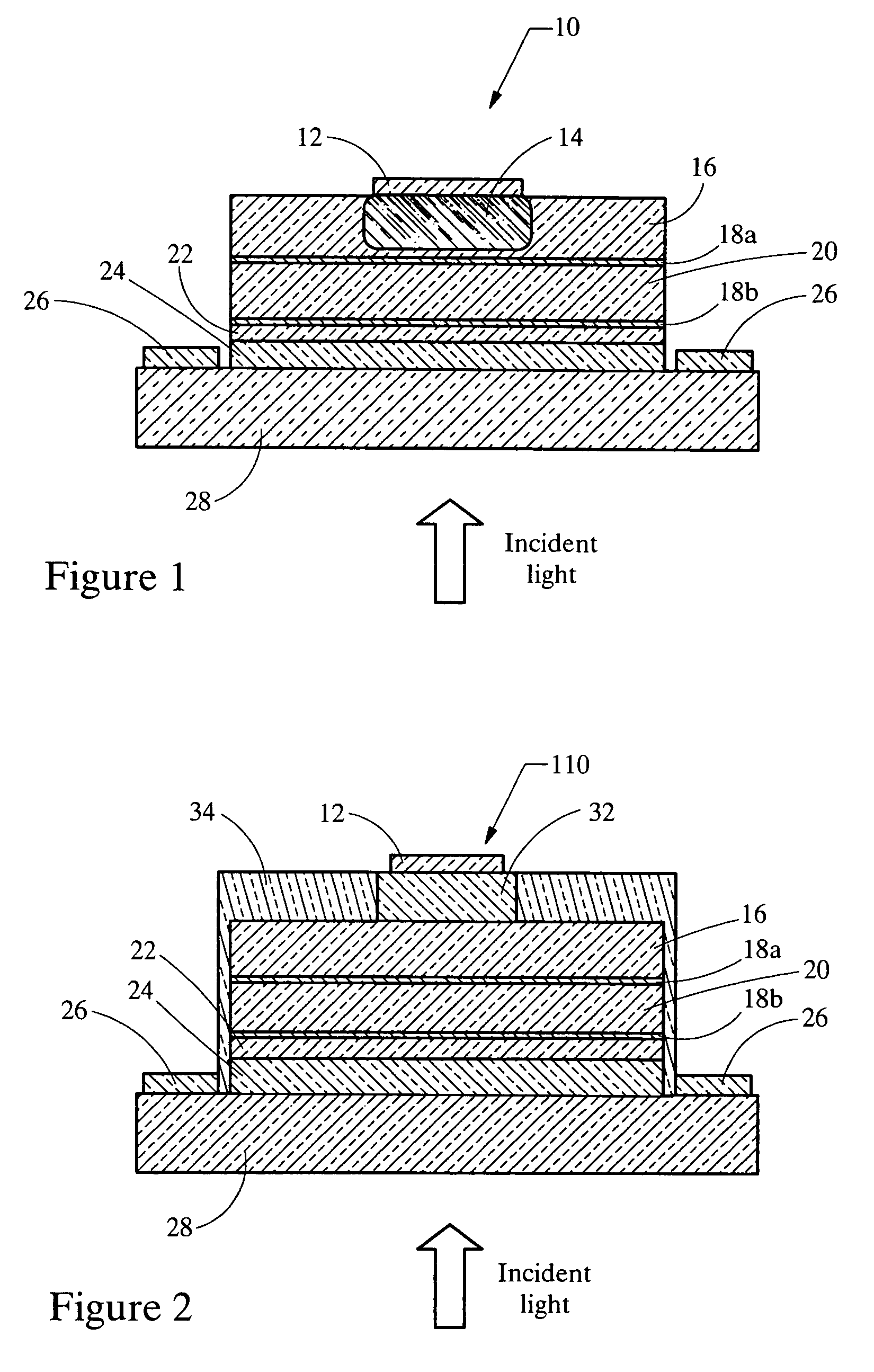Planar avalanche photodiode
a photodiode and avalanche technology, applied in the field of photodetectors, can solve the problems of reducing yield, difficult to passivate using a layer of insulating material, and reducing bandwidth
- Summary
- Abstract
- Description
- Claims
- Application Information
AI Technical Summary
Benefits of technology
Problems solved by technology
Method used
Image
Examples
Embodiment Construction
[0024]Referring now to FIG. 1, a photodetector structure, in particular, a planar avalanche photodiode (“APD”), embodying the principles of the present invention is illustrated and designated at 10. As its primary components, the APD 10 includes a p-type contact layer 12 and a first n-type semiconductor layer 28 that defines a second n-type contact layer. The avalanche photodiode 10 is optimized for increased performance through diffused p-type doping creating a p-n junction and a p-contact. Specifically, the p-type contact layer 12 is positioned on a second n-type semiconductor layer 16, which includes a p-type diffusion region 14 to form a p-n junction and create a p-contact to the second n-type semiconductor layer 16. Alternatively, the semiconductor layer 16 can be a p type so that a p-p+ junction is formed by the diffusion. The semiconductor layer 16 can be undoped or low doped to facilitate forming a depletion region under a bias voltage.
[0025]The planar avalanche photodiode 1...
PUM
 Login to View More
Login to View More Abstract
Description
Claims
Application Information
 Login to View More
Login to View More - R&D
- Intellectual Property
- Life Sciences
- Materials
- Tech Scout
- Unparalleled Data Quality
- Higher Quality Content
- 60% Fewer Hallucinations
Browse by: Latest US Patents, China's latest patents, Technical Efficacy Thesaurus, Application Domain, Technology Topic, Popular Technical Reports.
© 2025 PatSnap. All rights reserved.Legal|Privacy policy|Modern Slavery Act Transparency Statement|Sitemap|About US| Contact US: help@patsnap.com



